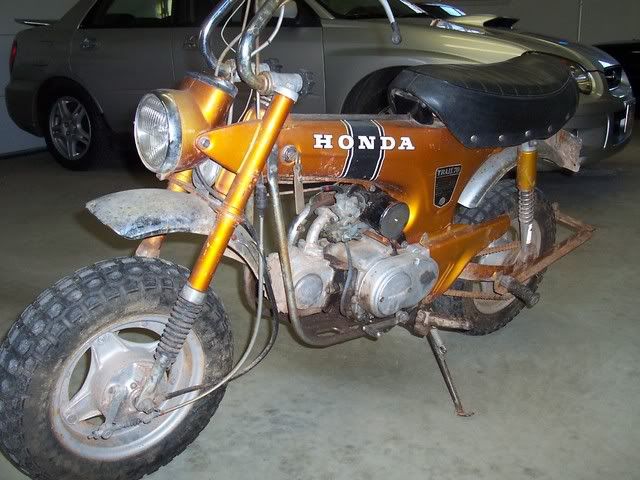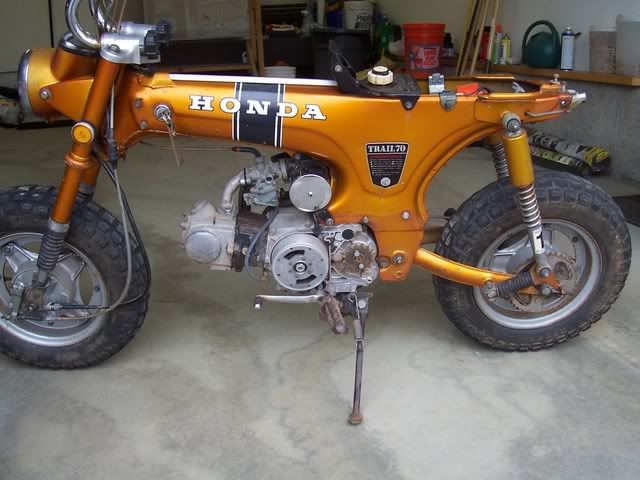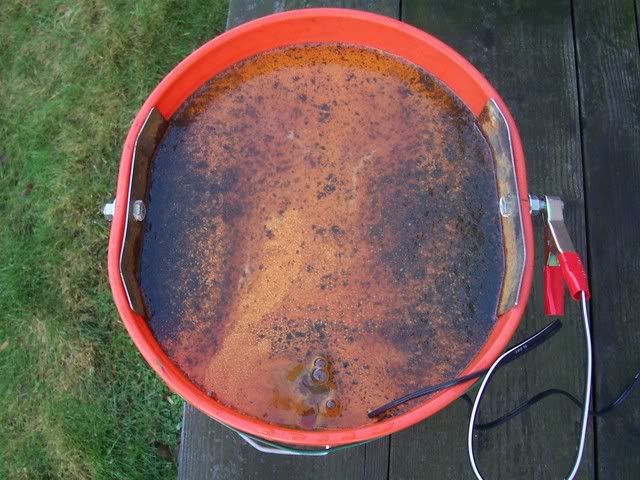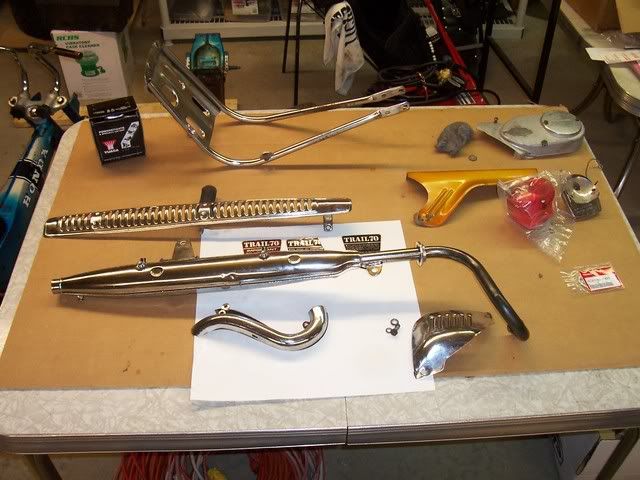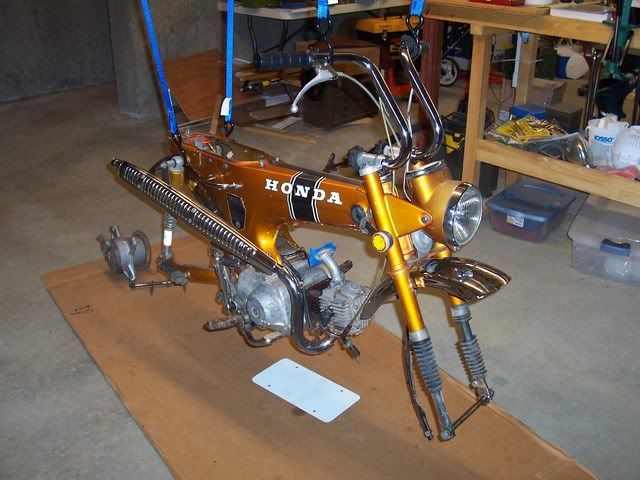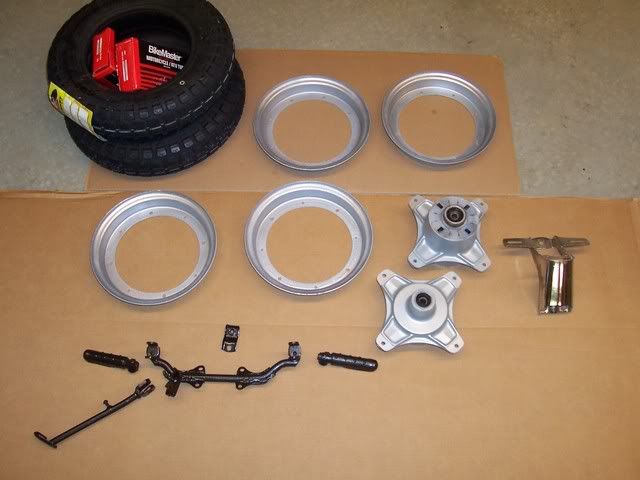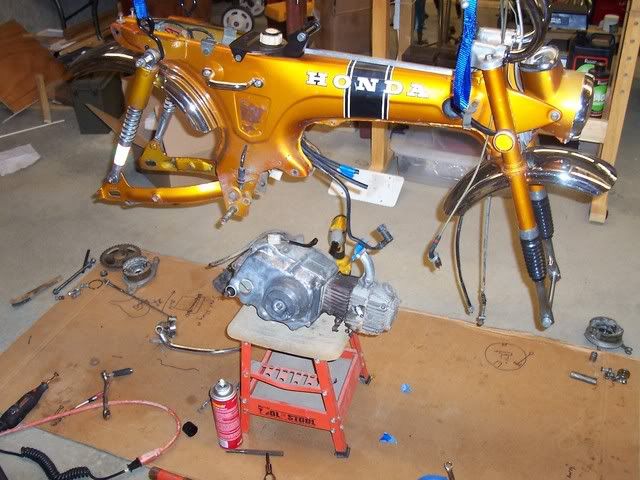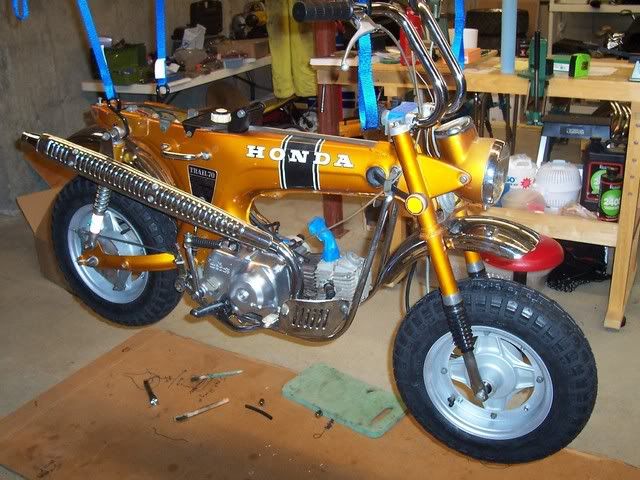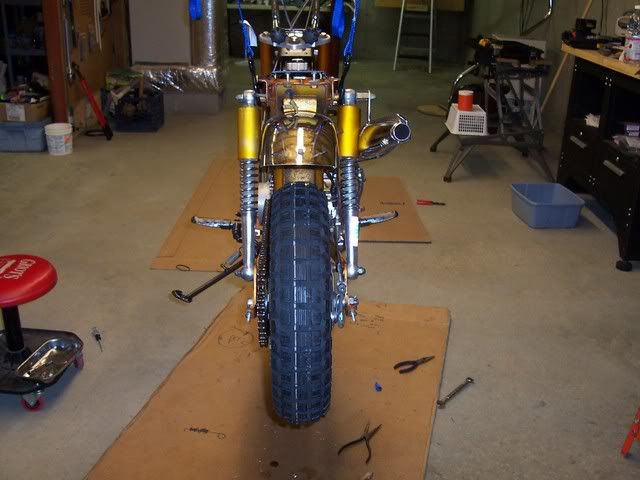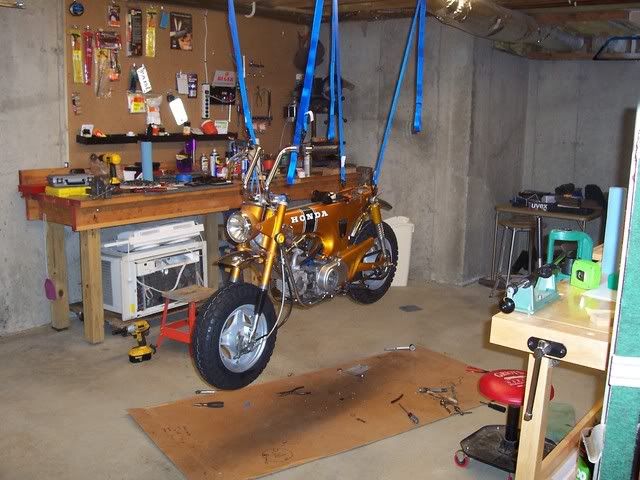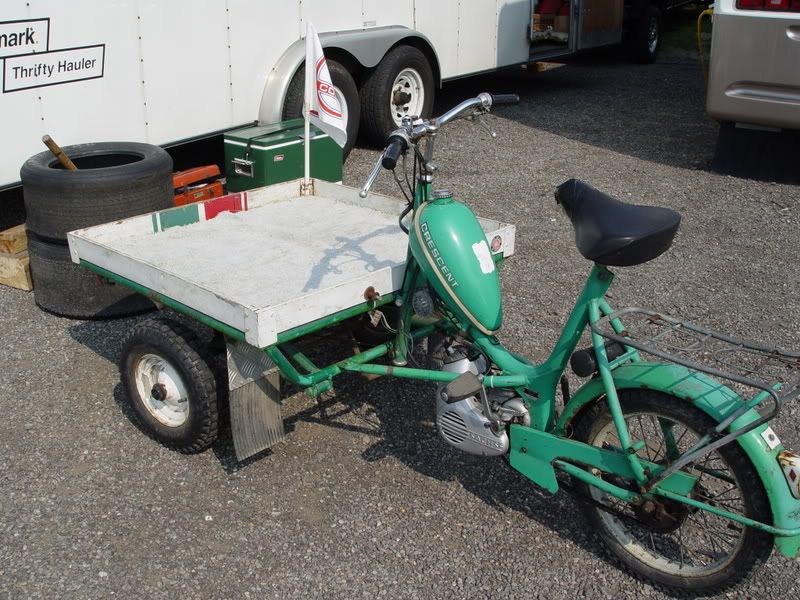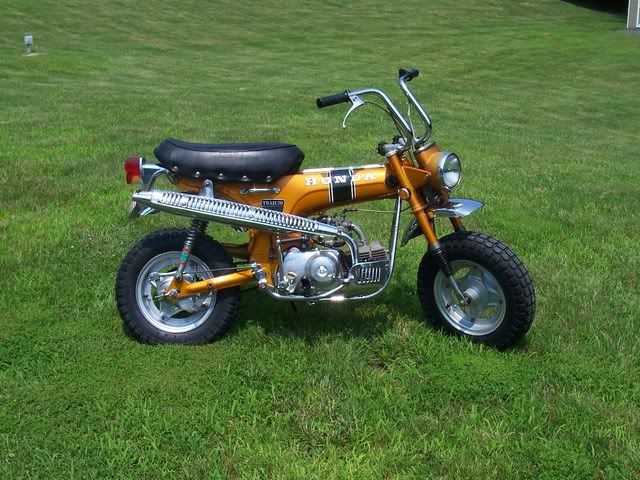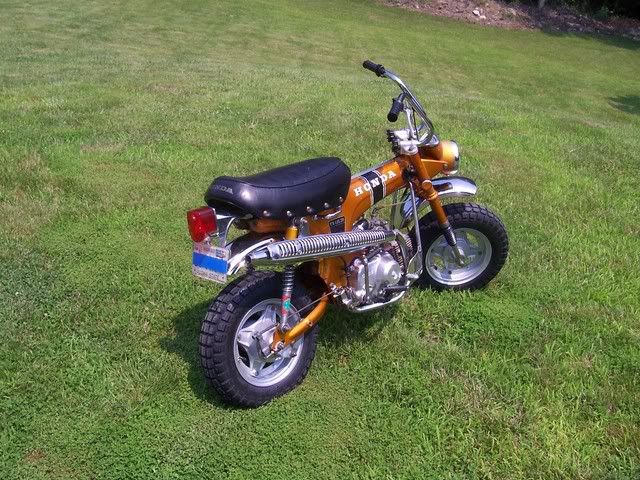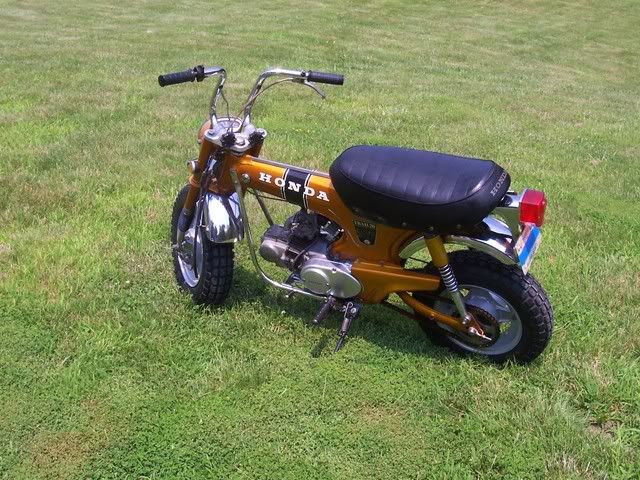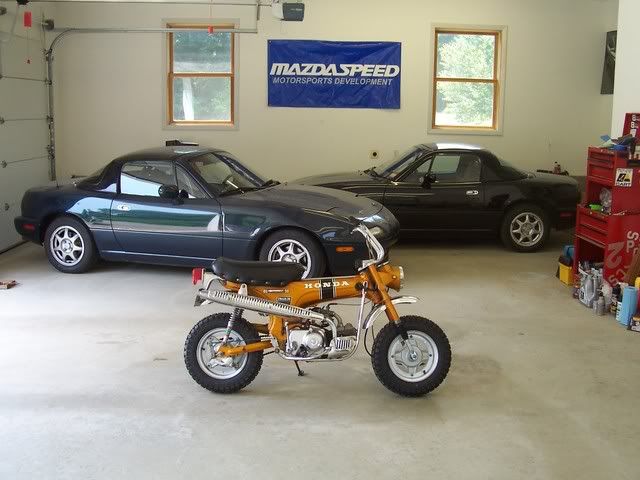Last week I posted a photo of my vintage pit bike project. I've done some more work and taken a few more pictures, so I figured that it was time for an update.
It's a 1971 Honda CT70 Mini Trail. I bought it last year, sight unseen from several states away, with the intention of using it as a parts bike. They're easy to work on, parts are plentiful and they're actually pretty collectible. When my friend delivered it to me, it was looking pretty neglected, but it was surprisingly complete.
I decided that it was much too good to use as a parts bike. I cleaned it up little bit and removed most of the chrome, as I wanted to try electrolytic rust removal.
The electrolysis worked pretty well. The rust gets converted to a black oxide powder that brushes right off. Any pitting remains, but the rust is gone.
So I thought that I would throw the chrome back on, put in a new battery and use it as-is. Then last week, I decided to put on some new fuel lines, since they looked to be 37 year old originals.
And then the fun began.
I had put the little bike in my basement for the winter, so that's where the work started. I had to remove the seat and the plastic fuel tank to get at the fuel lines. I also removed the air cleaner assembly for better access to the carb. I noticed that the rubber intake elbow was cracked, so I went to the web to order a new one. Almost every part is available for these things from Honda and most of them are surprisingly affordable. Since I was already placing an order, I figured that I might as well replace the original tires and a couple other small things at the same time.
The wheels are two piece centerless rims, which makes replacing tires relatively easy. There was a bit of surface rust on the wheels, so I decided to sandblast them, along with the foot pegs and the kickstand. The hubs serve double duty as the brake drums, so I took them apart and cleaned them up. The pads and wheel bearings looked good, but when I sprayed the hubs down with brake cleaner, the paint came right off, so I sanded them down, primed them and painted everything.
Before reassembling, I decided to polish up the clutch housing and the points cover (look it up, kiddies). I didn't like the way it was coming out, so I pulled out the engine for a little more thorough cleaning, minor detailing and some paint work.
After the paint dried, I recruited my seven year old nephew to help me bolt the engine back in. He also helped out with the wheel and brake assemblies. I may have been able to do it without him, but it sure was a lot easier having him there.
So, as it turns out, replacing two feet of rubber fuel line has now taken three vacation days. But they have been three of the most enjoyable vacation days that I have used in a long time. The bike is still hanging in the basement. In the morning, I'll put the carb back in, add the new battery, some fuel, check all the bolts and hopefully take a few laps around the neighborhood.
More photos to follow, once it's back out in the sunshine.





